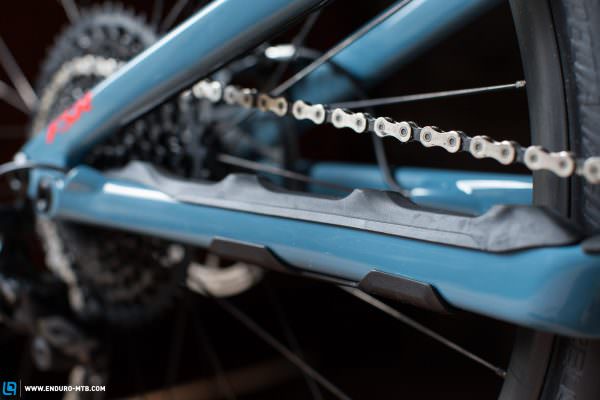Whenever Specialized introduces an updated version of the Stumpjumper the MTB-world holds its breath for a moment. Specialized launched the original Stumpjumper back in 1981 making it the world’s first production MTB. Today – 37 year on – the Stumpjumper is still regarded as a benchmark and trendsetter in the MTB industry. We came to Spain with Specialized and tested the latest incarnation of the legendary trail bike.
No other mountain bike category has changed as radically as trail bikes have over the last years – and the Stumpjumper has always played a crucial role in this development. A few years back bikes with a travel between 120 mm and 150 mm were still considered tame touring rigs but today they’re more powerful than ever and represent the most versatile mountain bike category.

When looking at the new Stumpjumper the new asymmetrical frame is the first detail to catch your eye. The aim of this extraordinary design is to create the stiffest-possible connection between your feet and hands. An additional strut to the right of the shock connects the top tube with the seat tube and effectively forms two smaller frame triangles. This trick allows for a stronger connection between the contact points and leads to a more natural ride and better feedback from the trail. On the non-drive side the shock is freely accessible – a design we already know from Specialized’s Demo downhill-bike.

The new extravagant rear end has entirely new kinematics which are finely tuned to the characteristics of modern shocks. The new rear end offers more support in the mid-stroke and allows you to run the suspension with less compression damping. This, in turn, improves the overall response of the rear end. The strong end progression offers plenty of reserves and prevents bottoming out on messy landings or big drops.

The newest Stumpy generation waives the popular AUTOSAG feature and renounces any kind of proprietary technology. This means that in future all Stumpjumper models will come with standard metric shocks. An integrated flip-chip allows you to adjust the head- and seat-angle by half a degree and lower the bottom bracket by 6 mm. Speaking of bottom brackets the new Stumpy turns its back on Pressfit and embraces the proven BSA standard once again – nice move!

According to Specialized, the new frame is stiffer and lighter. In addition, all carbon models now feature a carbon-swingarm – the new Comp-model weighs a whopping 550 g less than its predecessor. Specialized’s engineers worked hard to find the optimal carbon-layup and finally reached the perfect compromise between stiffness and flex in every frame size. Little by little additional carbon layers were wrapped around the lightweight raw frame until the bike’s riding characteristics matched the idea of the development team.

A clever system of nylon-guides inside the frame allows for an incredibly easy and clean cable routing – the cable-guide runs uninterruptedly from the head tube all the way back to the rear derailleur. This time around the SWAT door is integrated much deeper into the frame and sits flush with the frame edge and also offers 20% more storage room.




The new Stumpjumper keeps up with the times and is no longer compatible with 2-speed drivetrains. As with the Enduro, the new Stumpjumper comes with a 34.9 mm seatpost diameter and there’s a brand new dropper to go with it. The Command Post IRcc features a 16-position height-adjustment and 160 mm drop on frame sizes M to XL.
La Familia – Specialized Stumpjumper model overview
Specialized introduced a total of three new Stumpjumper models – all of them with the option of either 27,5” or 29” wheels. The standard model has no fancy suffix in its name and replaces Specialized’s popular trail bike. You can get this with either 29” wheels and 150/140 mm of travel or 27.5” wheels with 150/150 mm of travel. The Stumpjumper ST (Short Travel) replaces the Camber and has 130/130 mm of travel on 27,5” models and 130/120 mm travel on the 29” versions. The Stumpjumper EVO sports a strongly downhill-oriented geometry and has the same amount of travel as the standard model.

| Model | 27,5″ travel f/r | 29″ travel f/r |
|---|---|---|
| Stumpjumper ST | 130/130 | 130/120 |
| Stumpjumper | 150/150 | 150/140 |
| Stumpjumper EVO | 150/150 | 150/140 |

All 27.5” models are compatible with tire widths of up to 3.0″ and all 29″-bikes can take tires up to 2.6″ or can even be converted to a 27.5” x 3.0″ setup. The frames of the Stumpjumper and Stumpjumper ST are identical and the geometry and travel only change because of the different shock, rocker link and fork. Apart from this, the spec is pretty much the same – with the biggest difference being the tires. The Stumpjumper rolls on 2.6″ rubber and the ST model relies on classic 2.3″ tires. The Stumpjumper EVO has its very own frame design and features a more downhill-oriented spec.









